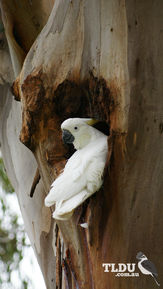
Shoppers Feedback:
Jan 17, 2017
Hello Ros,
I have now paid the invoice, but I would like to write to you just to say a big THANK YOU for getting me the Penguin!
The ChatterMate Penguin became a nice memory for me when I was in New Zealand, and I am so greatful to you for arranging so that I could have it! :-)
Thank you so much!!!!!!!!!!!
Regards,
Malin
Hi Ros,
Many thanks for your very kind email. I really appreciate your prompt reply!
I appreciate your advice regarding the decorations and customs. These are a gift for my daughter’s exchange student family so when she returns home on the weekend I will show her and see if she loves them as much as I do!
Thanks so very much again - I am truly grateful for your kind assistance.
Kind Regards
Bernadette
Ros,
Thanks again for the great customer service. It's a refreshing change!
Best regards,
Trevor
Hey Roz,
Thank you for your emails. Just loved my first order. The cute little Aussie bush critters are going to be used for an office Christmas decoration. My colleagues also liked them and talked about making an order to your site. I'll send you a photo when completed.
I'll be ordering more to send to my daughter's host family in America.
Fabulous service from you.
Kind regards,
Michelle
Thankyou. Order arrived today. One very happy grandson with his new beastly binoculars.
Regards,
Irene
- Home
- Wild Wonders
- Shop
- Aromas of Australia
- Australian Made
- Books
- Book Marks
- Christmas Decoration Sale
- Christmas Decorations
- Clocks
- Drink Holders
- Garden & Outdoor
- Gift Wrapping & Cards
- Home & Giftware
- Jewellery
- Keyrings
- New Products
- Pencils & Pen Holders
- Photo Frames
- Plush Toys
- Plush with Sound
- Sheepskin Rugs
- Stationery
- Stone Carvings
- Toys & Games
- Travel Goods
- Wedding
- Wild Figurines
- Wildlife Safety Products
- Wind Chimes
- Wine Charms
- View All Products
- Wildlife
- Australiana
- Explore
- Contact Us
Sulphur-crested Cockatoo

Quick Facts
| Length: | 48 cm |
| Height: | - |
| Weight: | 833 grams |
| Colour: | White, with a sulphur-yellow crest and a dark grey-black bill |
| Habitat: | Variety of timbered habitats and are common around human settlements |
| Food: | Berries, seeds, nuts and roots. |
| Predators: | - |
| Status: | Secure in all states and territories in Australia |
The Sulphur-crested Cockatoo is a large white parrot. It has a dark grey-black bill, a distinctive sulphur-yellow crest and a yellow wash on the underside of the wings. Sexes are similar, although the female can be separated at close range by its red-brown eye (darker brown in the male). This is a noisy and conspicuous cockatoo, both at rest and in flight. Young Sulphur-crested Cockatoos resemble the adults.
The Sulphur-crested Cockatoo is similar in appearance to the three species of corella found in Australia. Corellas are smaller, however, and lack the prominent yellow crest.
The Sulphur-crested Cockatoo's range extends throughout the northern and eastern mainland, and Tasmania. A small population has become established around Perth, Western Australia. The species also occurs in New Guinea and the Aru Islands, and has been introduced into New Zealand and Indonesia.
Sulphur-crested Cockatoos are found in a variety of timbered habitats and are common around human settlements. The birds stay in the same area all year round.
The Sulphur-crested Cockatoo's normal diet consists of berries, seeds, nuts and roots. It also takes handouts from humans. Feeding normally takes place in small to large groups, with one or more members of the group watching for danger from a nearby perch. When not feeding, birds will bite off smaller branches and leaves from trees. These items are not eaten, however. The activity may help to keep the bill trimmed and from growing too large.
The eggs are laid in a suitable tree hollow, which is prepared by both sexes. Both birds also incubate and care for the chicks. The chicks remain with the parents all year round and family groups will stay together indefinitely.
The popularity of the Sulphur-crested Cockatoo as a cage bird has increased its range, as these birds either escape or are released deliberately in areas where they do not already occur. The species has become a pest around urban areas, where it uses its powerful bill to destroy timber decking and panelling on houses.
One of Australia's most popular and iconic birds, the Sulphur-crested Cockatoo, has been known to live up to eighty years of age in captivity.
Last Updated: Thursday 18th July, 2013
BirdLife Australia - www.birdlife.org.au
BUSH e-TELEGRAPH
Signup for our monthly newsletter the "e-Telegraph"
Quick Links
Home | The Beginning | About The Land Down Under | Wild Wonders | Advertise on Wild Wonders | Christmas Decoration Sale | Christmas Tree Decorations | Drink Holders | Plush with Sound | Stone Carvings | Wildlife Wine Charms | Freebies | Australian Wildlife | Help Our Wildlife | Australiana | Photo of the Month | Explore The Land Down Under | Contact Us | Legal Notices

